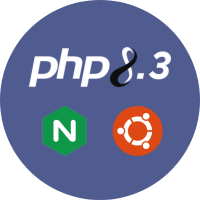Database server setup: enhancing security and performance
Setting up a robust database server is a critical step in ensuring the smooth functioning of applications and safeguarding sensitive data. In the realm of cybersecurity and efficient data management, employing good practices can make a significant difference. This article explores the advantages of segregating application and database servers, emphasizing the importance of allowing only authorized connections. Additionally, we'll discuss the use of SSH tunnels to enhance security and weigh the pros and cons of such a system.
Prerequisites
Understanding of SSH, its mechanics, and the process of establishing connections is fundamental. We recommend reading the following article for insights into these concepts.
Segregating application and database servers
When you segregate application and database servers, you're essentially implementing a strategic separation of responsibilities within your digital architecture. Imagine your digital space as a well-organized office: the application server acts as the front desk, handling user queries and requests, while the database server resides in the back, diligently managing the intricate data processes. This separation is like compartmentalizing different departments, ensuring that even if there's an issue with the front-end application, the critical data held in the database remains shielded. This organizational structure not only boosts security but also optimizes the workflow, enabling each server to concentrate on its designated role.
Creating restricted access involves setting up a meticulously controlled gateway to your digital fortress. Imagine it as orchestrating a thorough passport check for every digital entrant. In this context, the application server acts as an authorized entity with the correct credentials, enjoying a direct route to the vault - your database. To fortify this arrangement, consider the advantage of placing your database server within a private network. Hosting providers typically facilitate this by configuring network settings, ensuring that all connections are channeled within this secure network. This private network, protected from external access, functions as a restricted enclave exclusively accessible to entities within the established circle of trust. By limiting access to this controlled network, you ensure the isolation of your data from potential risks linked to external entry points, thereby strengthening the overall security of your digital assets.
External connection to the database
The integration of an SSH tunnel becomes indispensable when establishing external connections to your database server. SSH tunnels operate like confidential corridors ensuring secure communication between your application and the database servers. Setting up an SSH tunnel involves establishing a private, encrypted connection that shields your data during transit. It's comparable to building a secret passageway that connects two secure rooms.
Setting up an SSH tunnel involves a two-step process. First, configure your database server to exclusively accept private network connections. This ensures that the database is accessible only within its confined environment, heightening its defense against external threats.
The second step involves creating the SSH tunnel. The command for this varies slightly depending on your specific use case, but a general template looks like this:
ssh -N -L <local_port>:<database_server_address>:<database_port> <user>@<external_server_address>
<local_port> is the port on your local machine through which you'll access the tunnel
<database_server_address> and <database_port> are the address and port of your database server
<user> is your username
<external_server_address> is the address of the external server acting as the gateway
In case of having a configuration file, you can use the following syntax:
ssh -N -L <local_port>:<database_server_address>:<database_port> <external_server_name>
<local_port> is the port on your local machine through which you'll access the tunnel
<database_server_address> and <database_port> are the address and port of your database server
<external_server_name> is the name defined in configuration for the external server acting as the gateway
This command establishes a secure connection, creating a tunnel between your local machine and the external server, which then communicates with the database server. Ensure that the external server is either positioned within the same private network or maintains a connection with the database server. This method ensures that even if someone attempts to intercept the data flow, they would only encounter an indecipherable, encrypted stream, fortifying the security of your data transactions.
Pros and Cons
Implementing these practices undoubtedly enhances your system's security and performance. However, it's crucial to recognize the associated trade-offs. On the positive side, segregating servers and employing SSH tunnels significantly mitigates the risk of unauthorized access and data breaches. This heightened security is paired with enhanced overall performance, as dedicated servers adeptly handle specific tasks. Nevertheless, the setup process demands a certain level of expertise. Additionally, the increased cost of maintaining separate servers may present a financial challenge, but it often proves a justified investment when compared to potential losses resulting from a security breach.
Conclusion
In the world of database servers, integrating these best practices is like reinforcing your digital stronghold with an advanced security system. By separating application and database servers, controlling access, and employing SSH tunnels, you establish a strong defense against potential threats. While the initial setup may seem complex, the improved security and optimized performance make it a valuable investment. In the dynamic landscape of cybersecurity, these practices act as a formidable shield, ensuring the safeguarding of your data from unauthorized access and malicious intent.



0 Comments